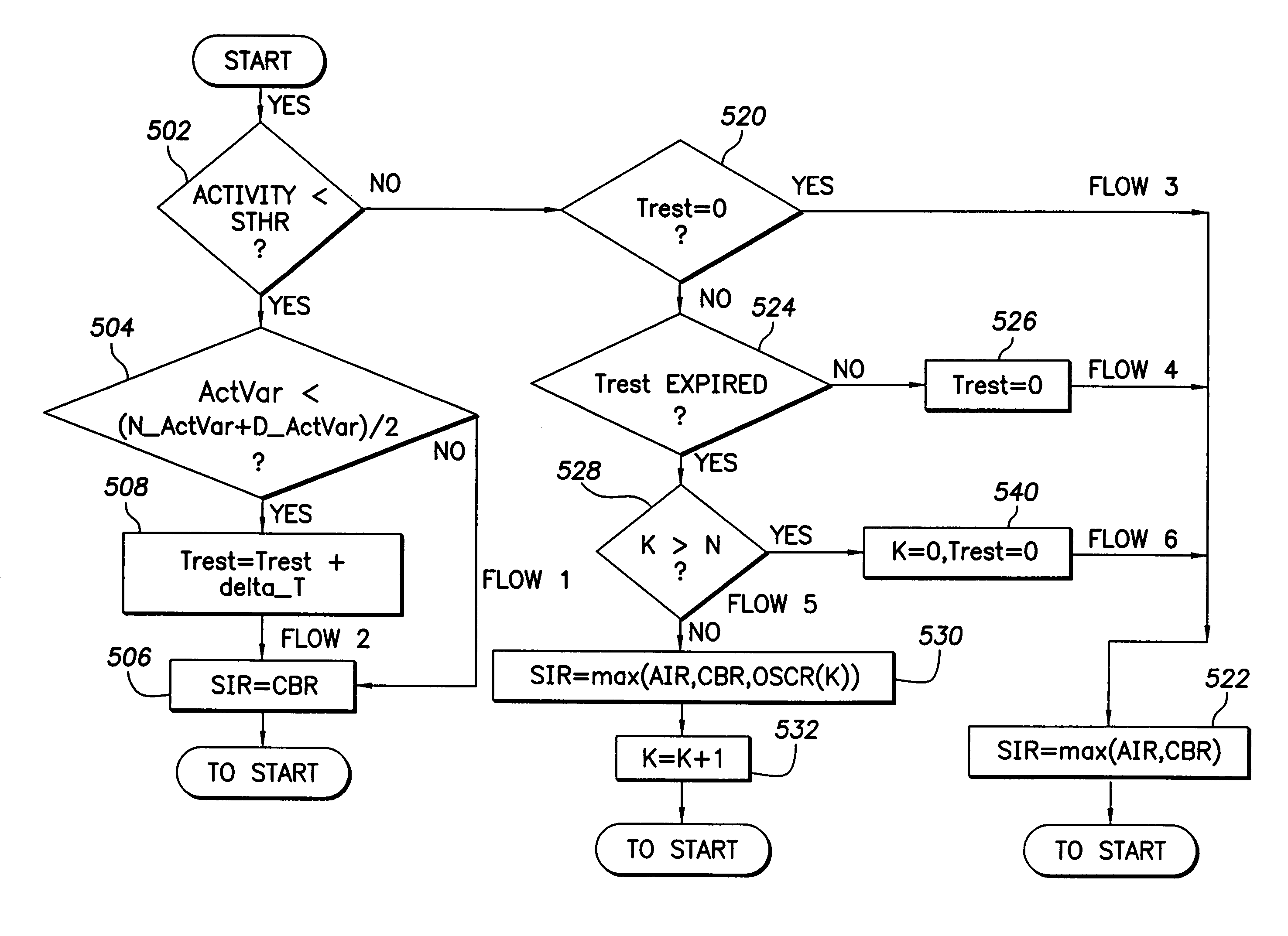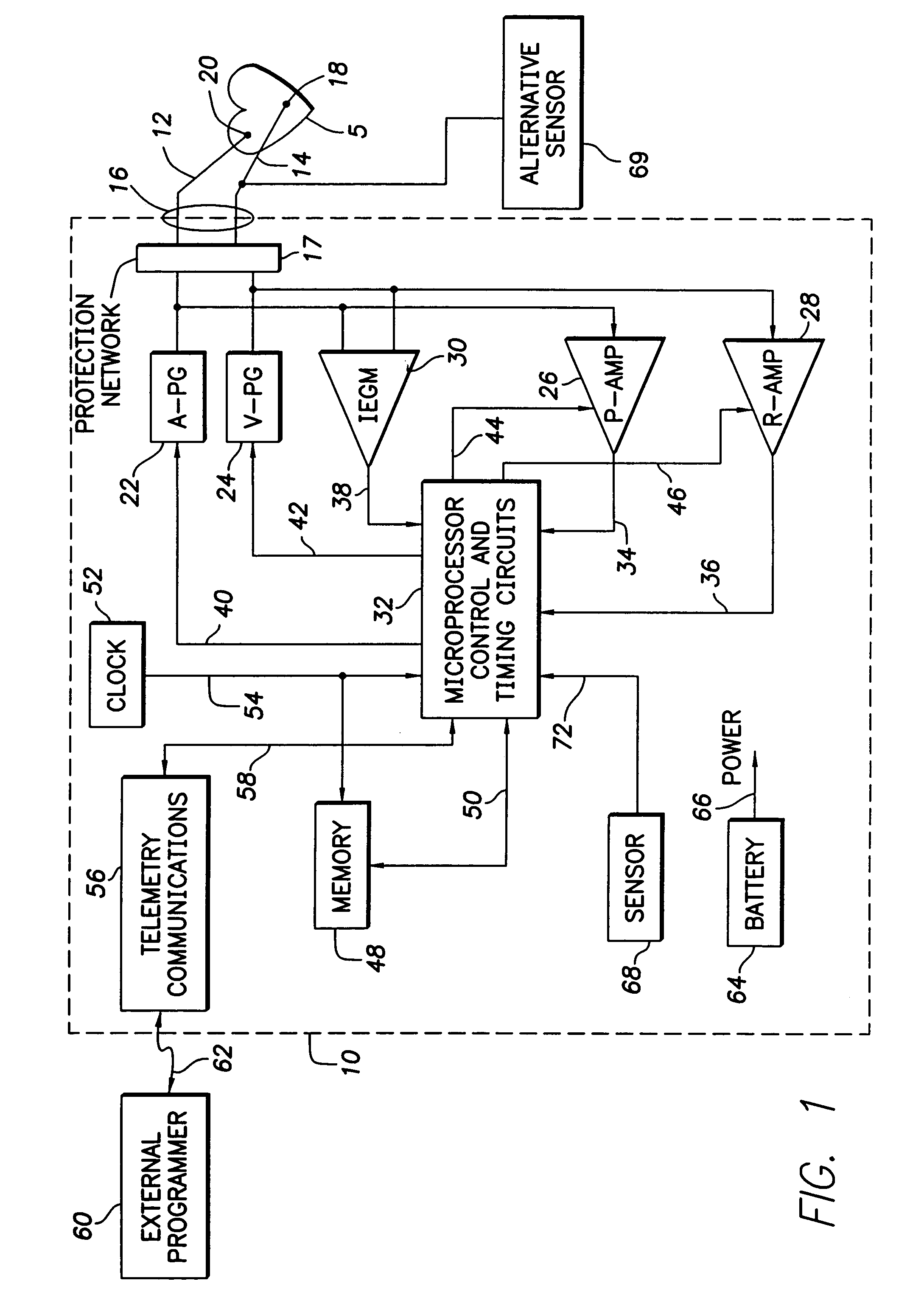System and method for modulating the pacing rate based on patient activity and position
- Summary
- Abstract
- Description
- Claims
- Application Information
AI Technical Summary
Benefits of technology
Problems solved by technology
Method used
Image
Examples
Embodiment Construction
[0020]Referring now to FIG. 1, the implantable cardiac stimulation device in accordance with this invention is shown as a dual sensor rate-responsive pacemaker 10. It is well within the scope of this invention to operate this stimulation device in a demand mode as is well known within the art. While the preferred embodiment is directed towards a stimulation device which uses an activity sensor for determining the pacing rate, it is well within the scope of this invention to apply the principles of this invention for use with other physiologic sensors that measure metabolic demand.
[0021]FIG. 1 sets forth a simplified block diagram of the stimulation device 10. The stimulation device 10 is coupled to a heart 5 by way of two leads 12, 14. The first lead 12 has at least one electrode 18 in contact with the atrium of the heart 5, and the second lead 14 has at least one electrode 20 in contact with the ventricles of the heart 5. The leads 12, 14 are electrically and physically connected t...
PUM
 Login to View More
Login to View More Abstract
Description
Claims
Application Information
 Login to View More
Login to View More - R&D
- Intellectual Property
- Life Sciences
- Materials
- Tech Scout
- Unparalleled Data Quality
- Higher Quality Content
- 60% Fewer Hallucinations
Browse by: Latest US Patents, China's latest patents, Technical Efficacy Thesaurus, Application Domain, Technology Topic, Popular Technical Reports.
© 2025 PatSnap. All rights reserved.Legal|Privacy policy|Modern Slavery Act Transparency Statement|Sitemap|About US| Contact US: help@patsnap.com



